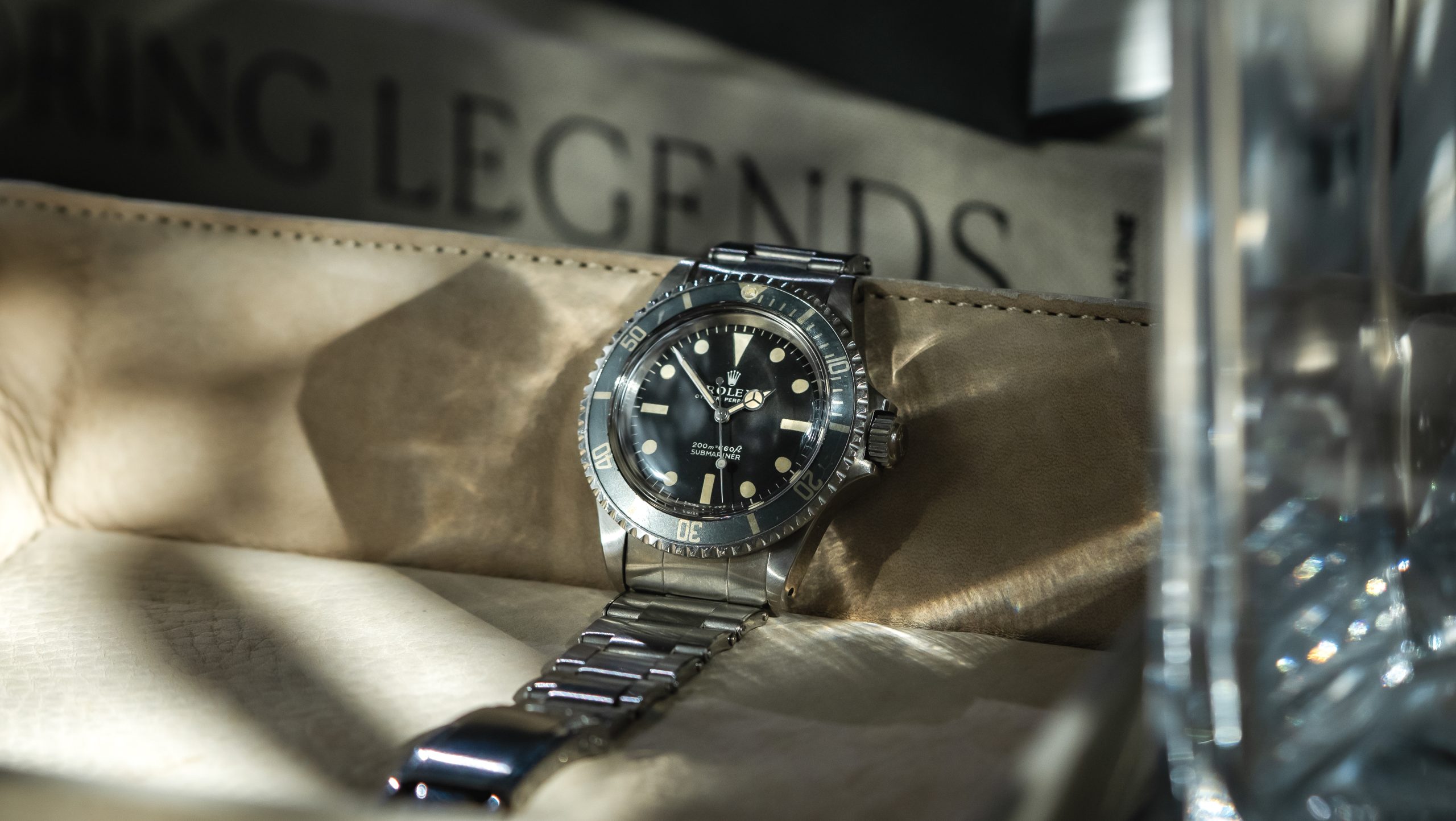
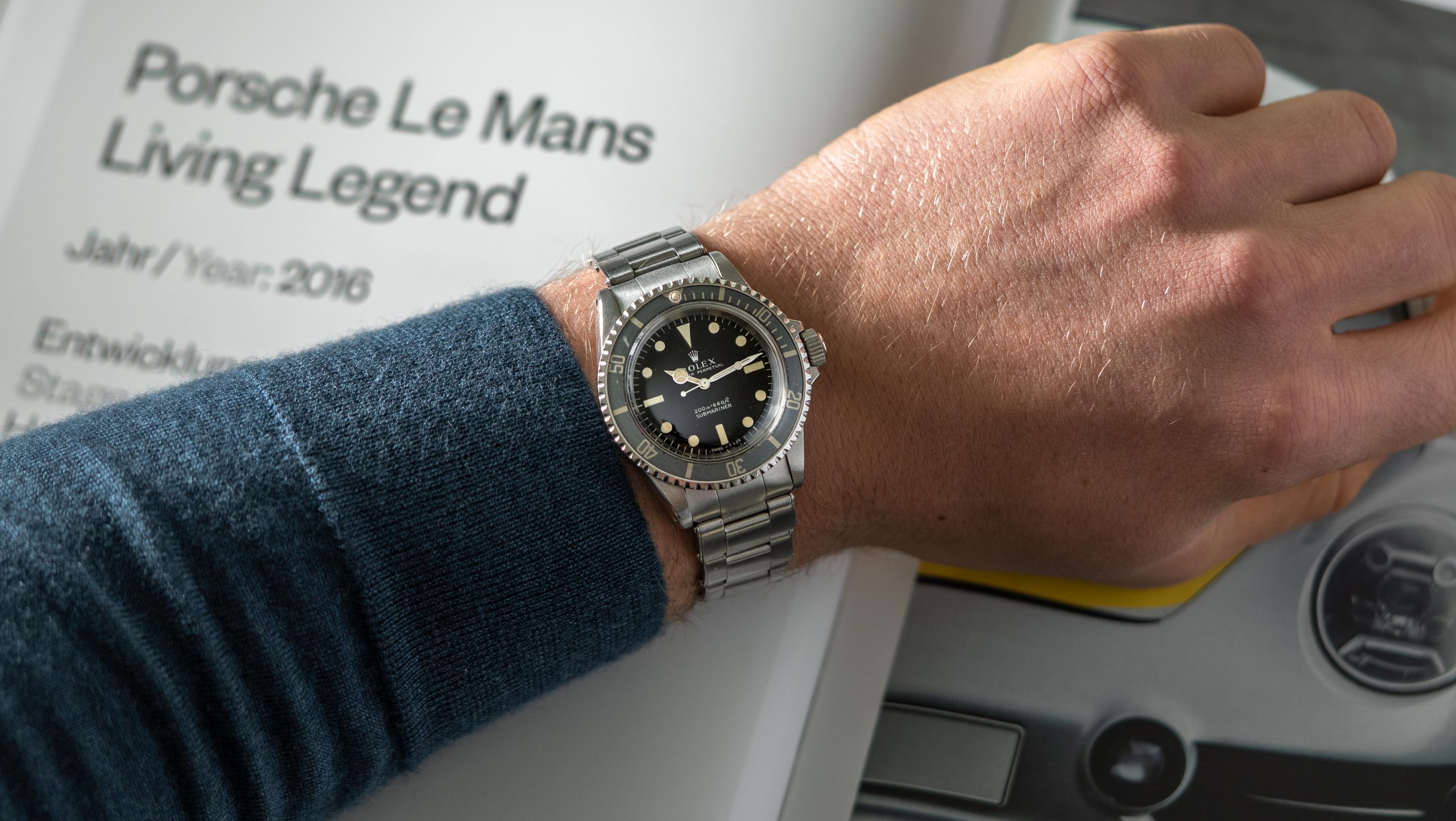
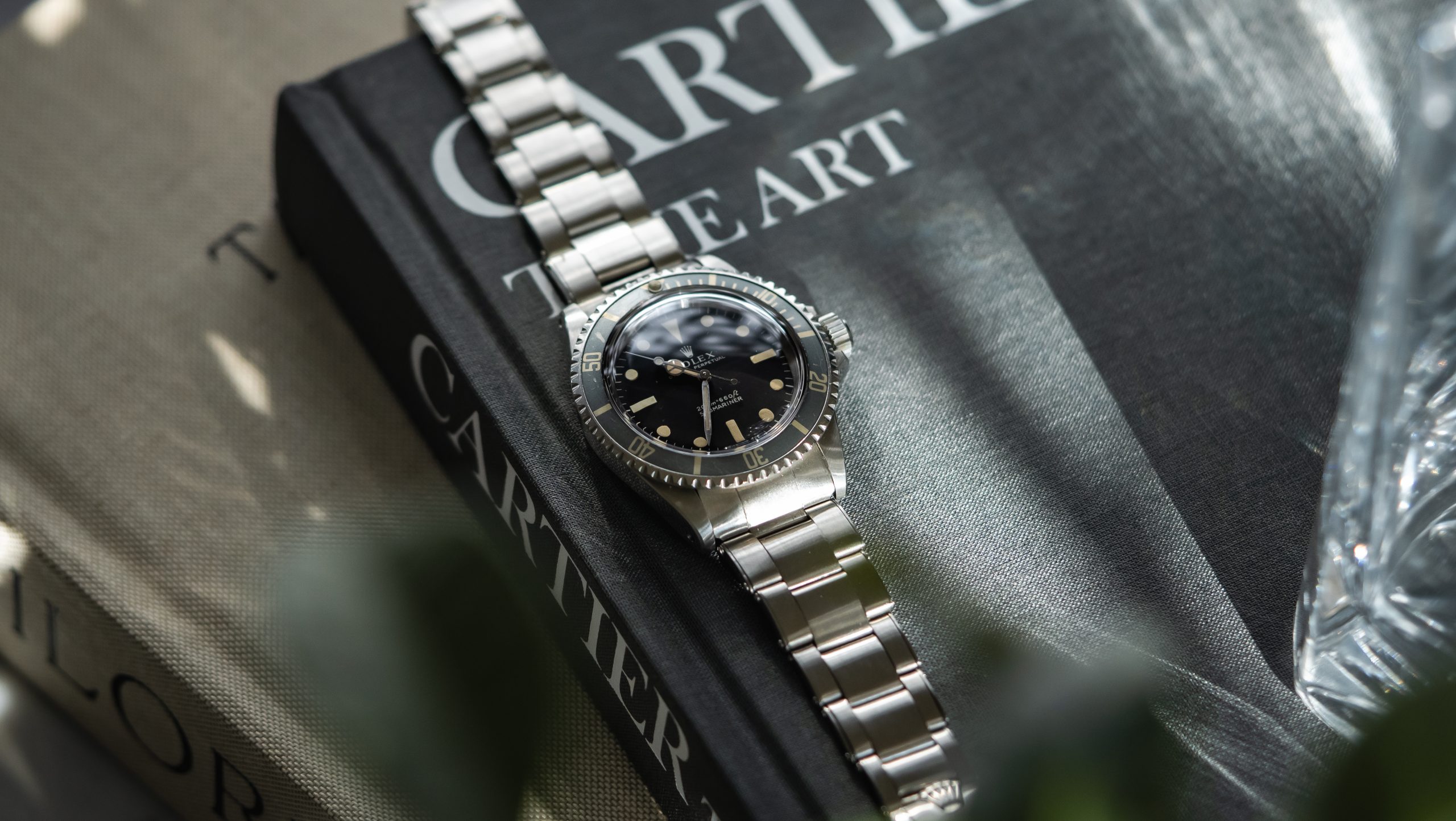
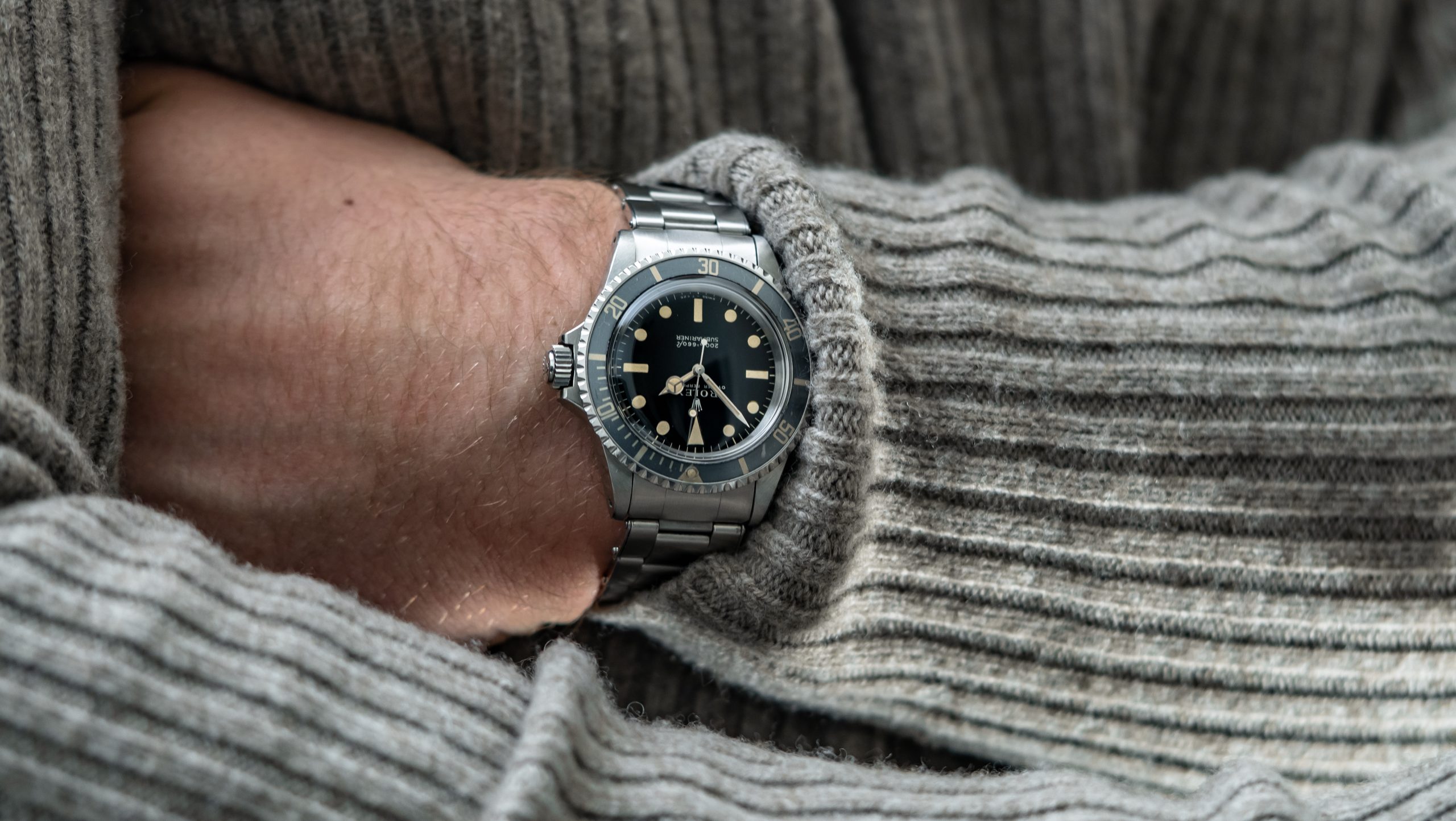
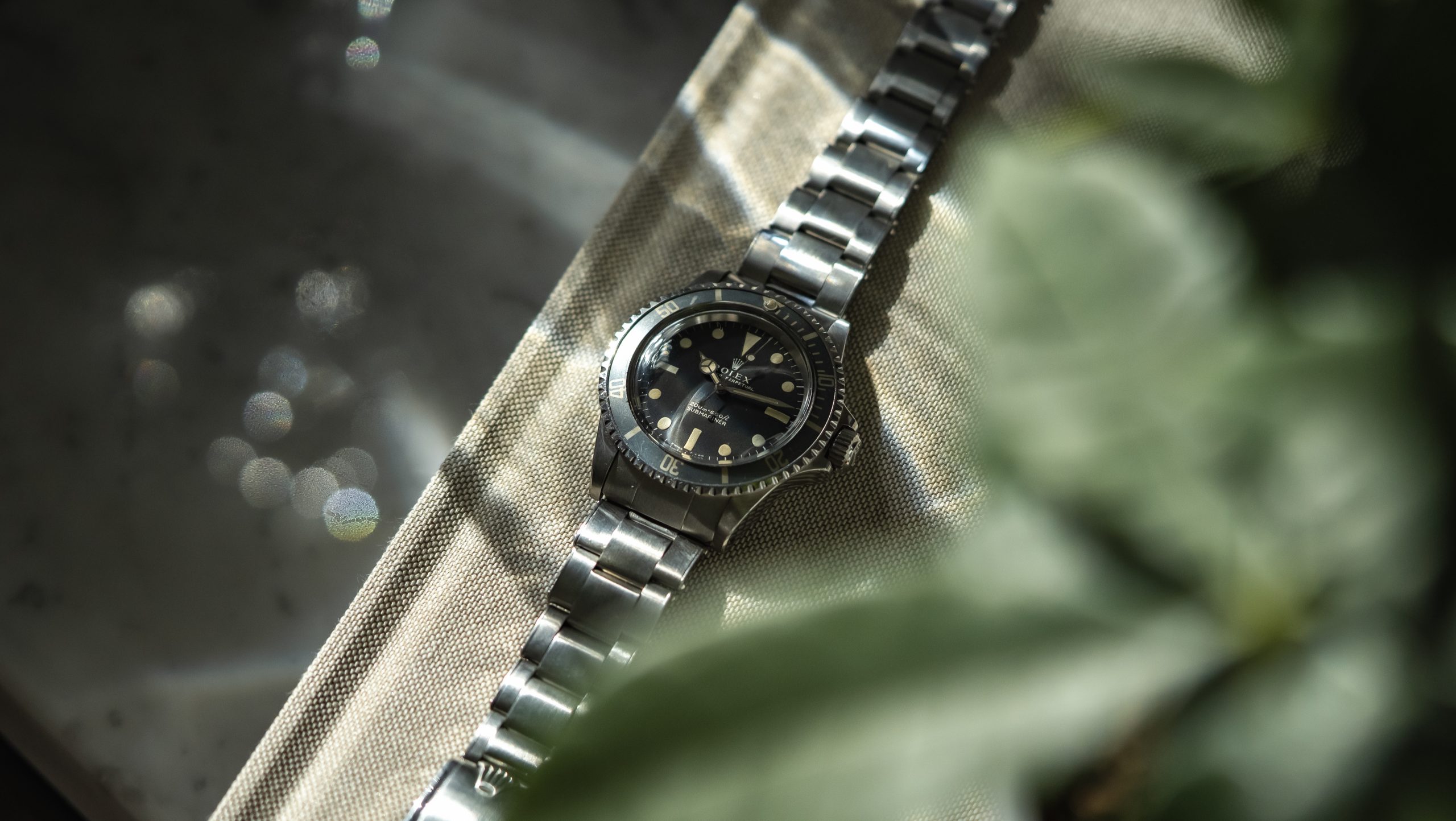
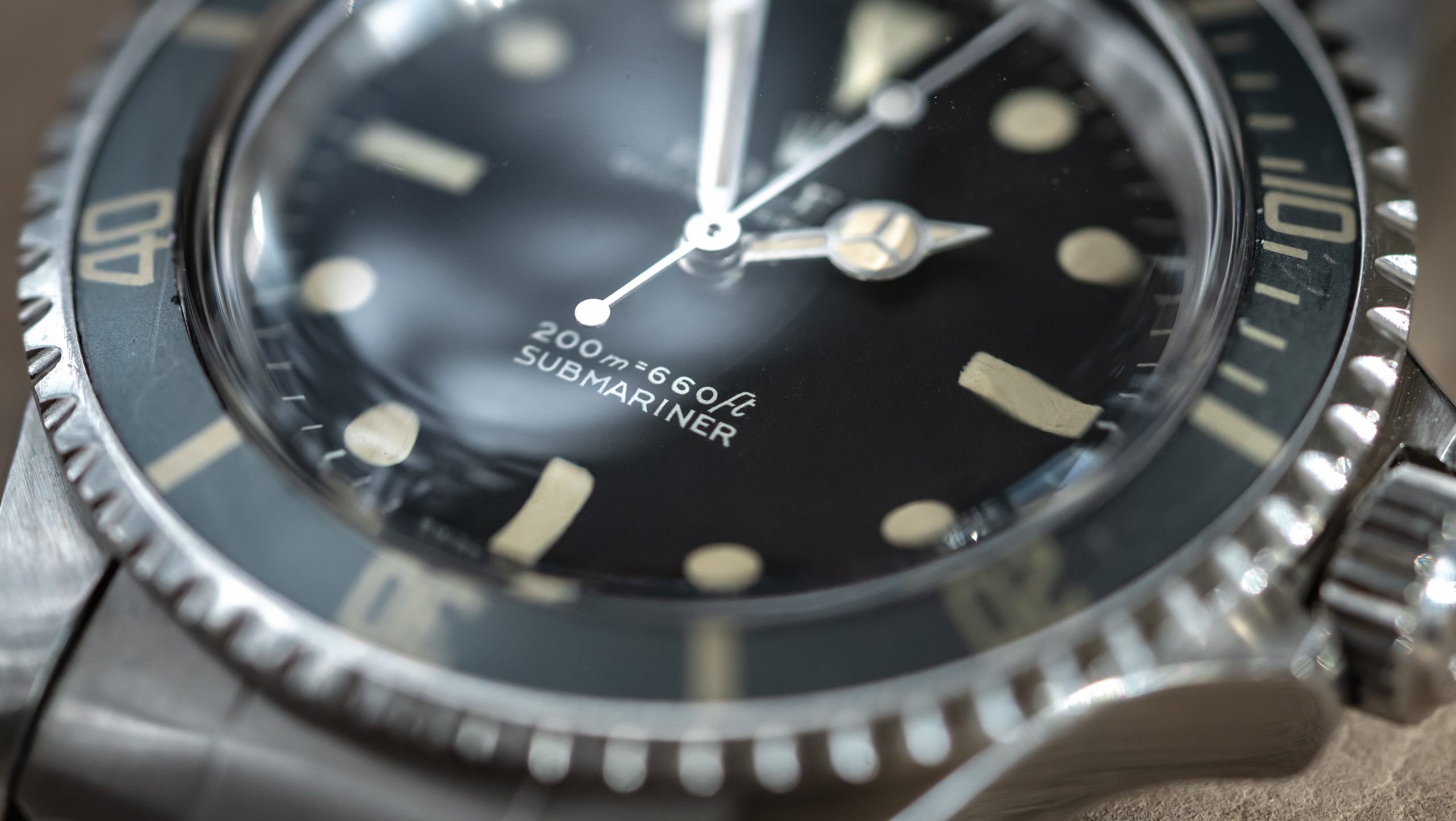
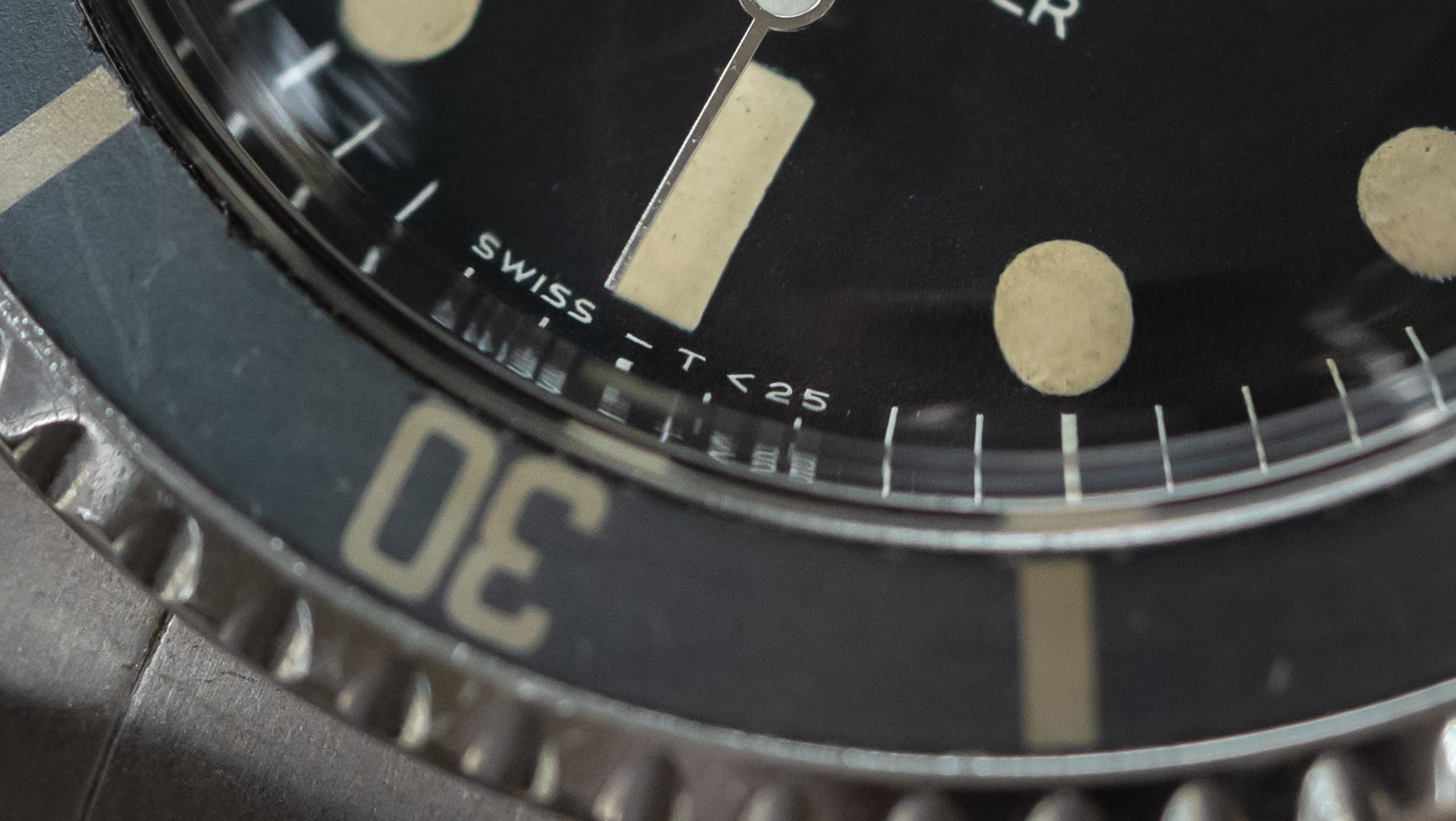
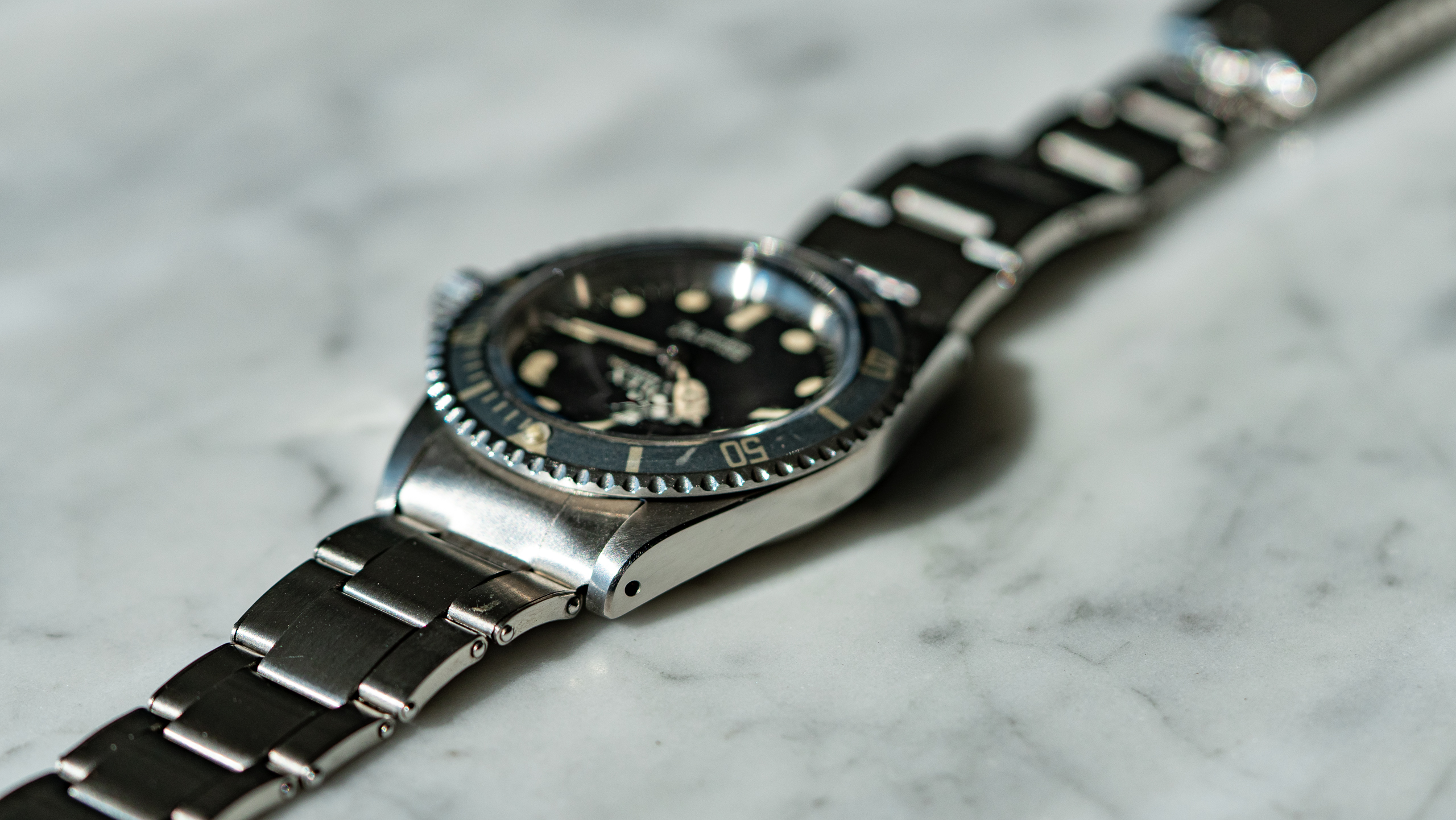
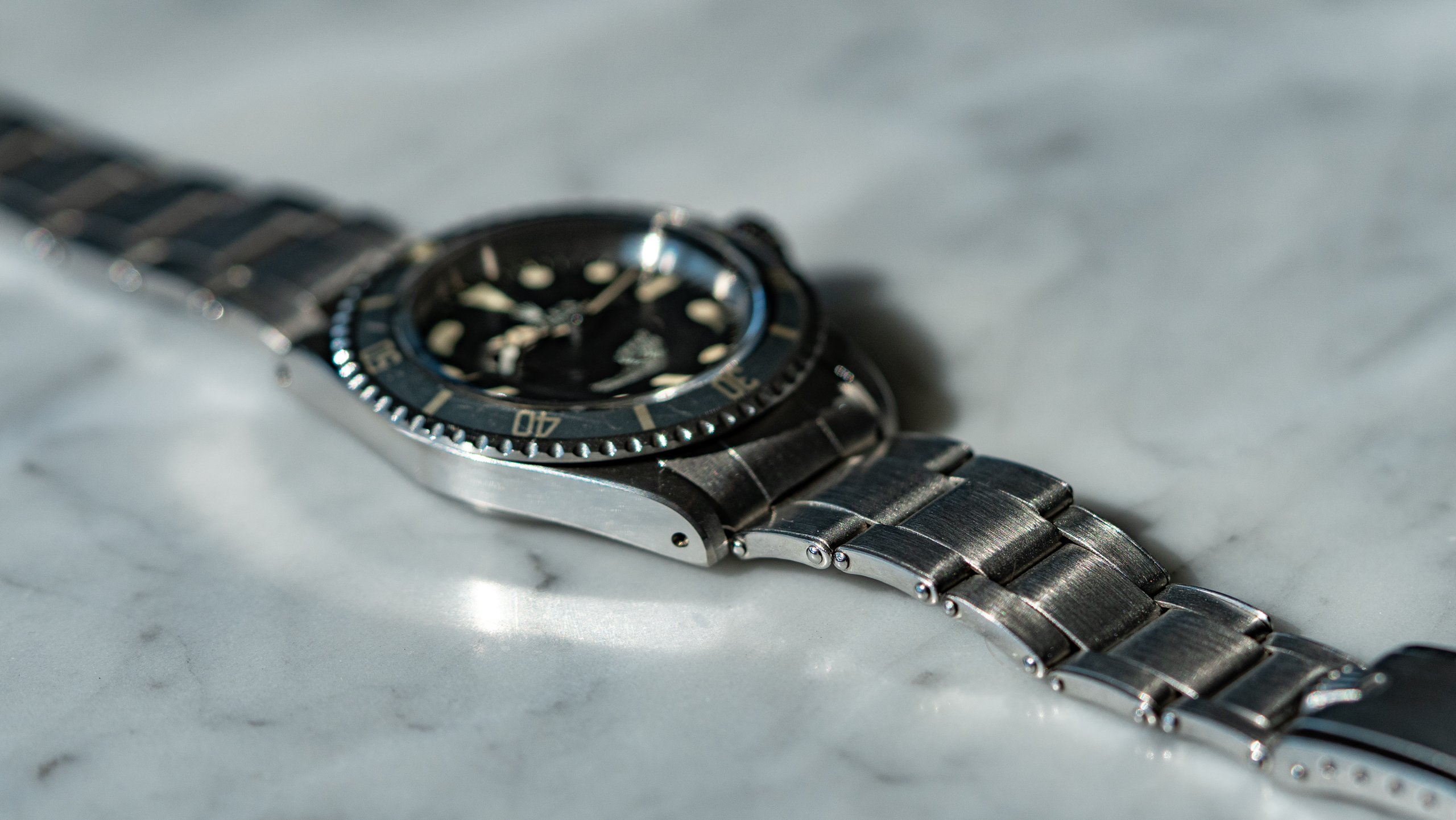
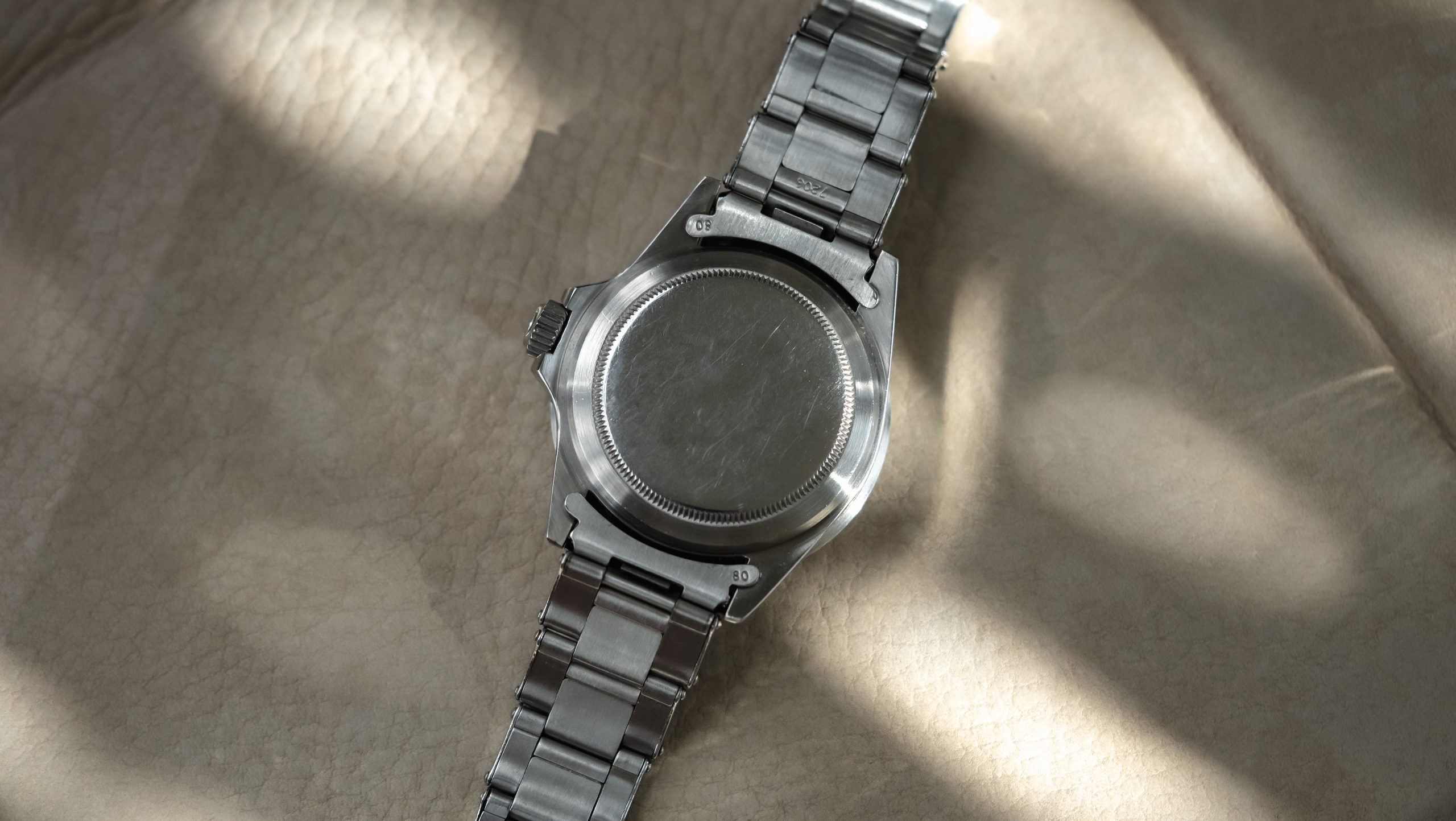
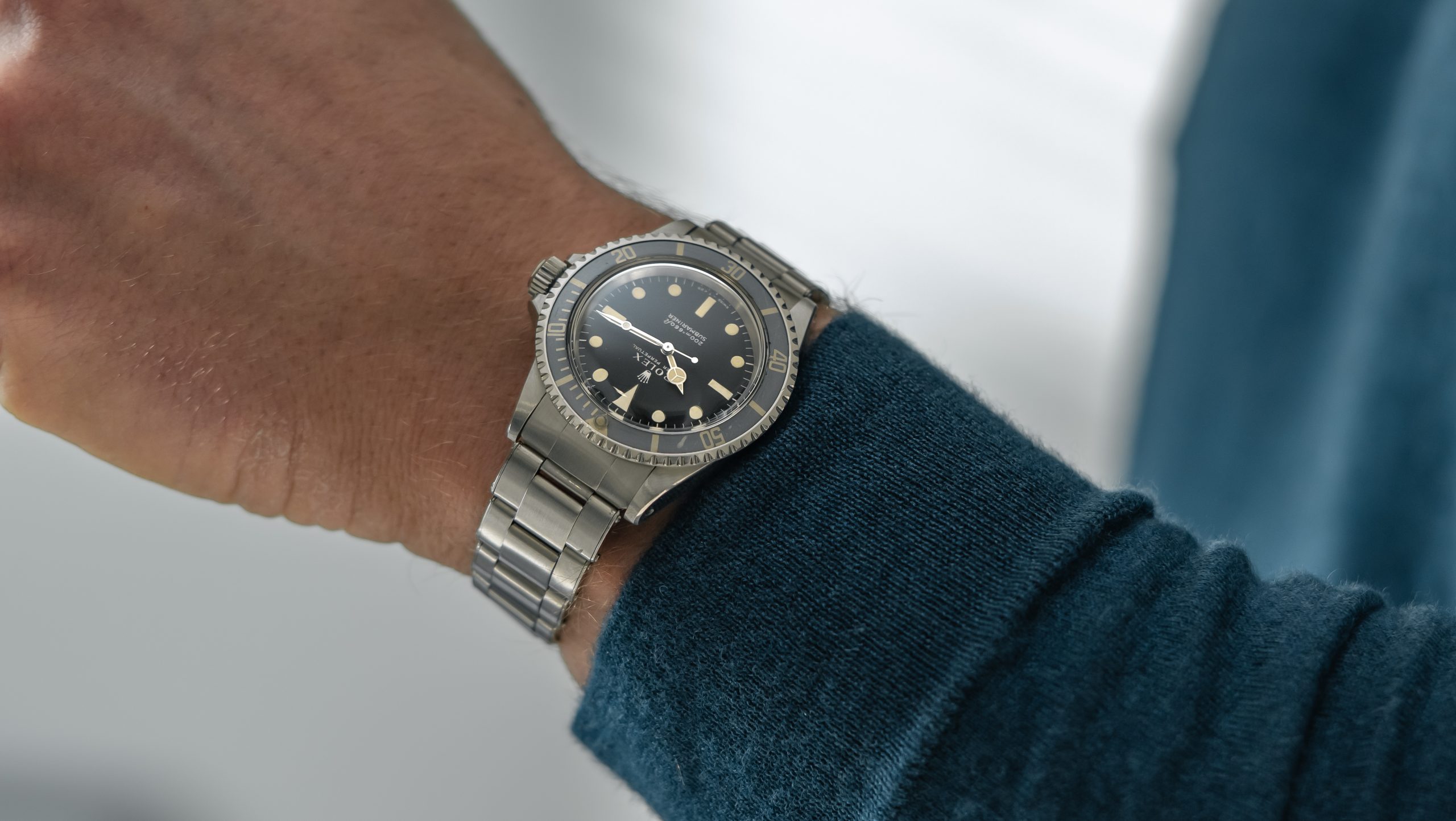
5513, Meters First Submariner, Steel
$26,800
An exceptional example of a first production year meters first 5513 Submariner, featuring a ghosted bezel with matching pearl, sharp case on a date-matching rivet bracelet, and well-preserved matte dial with cream tritium.
Sold
Description
The matte dial Submariner is, for want of a better word, an institution. Everyone past a certain level of Rolex enthusiasm has worn a matte 5513 or 5512 at least once. But it all started here with two small words: meters first. The shift from gilt gloss to matte dial Subs started in 1966. This 5513 is from that very year. It’s the most iconic diver from the golden era of dive watches.
The 5513 itself launched in 1962 and is where the fully-assembled DNA of the modern crown-guard Submariner line began in earnest. This is recognizable instantly to anyone as a Submariner even today, whereas a 6536 might only be known by those of us who identify as watch addicts. But all the little details are still thoroughly vintage: thick cream tritium plots, plexi crystal, rivet bracelet, and a very ghosted bezel.
Meters first variants hail from early 5513 production and were the dial which transitioned from gilt gloss to both matte non-serif & serif dials. The change started around 1966 and ran for just three or so years. The dial is otherwise a standard tritium matte, produced before the maxi plot variants. A few nuanced exist here; The L of ROLEX has less serif. SWISS – T < 25 should run across five minute hash marks as opposed to latter dials where it runs across three. The depth rating 6s are also slightly open under loupe.
Perhaps most importantly to today’s collectors, though, its 39.5mm steel case wears with a delicately thin and light touch that more modern Submariners simply don’t come anywhere close to. This was an artifact of proportional tastes and construction styles of the era, things like folded end links, rivet construction, a less fussy calibre, and plexi. The aesthetic is timeless, the quality is beyond reproach, and they’re still ultra-desirable some six decades later. Put simply, very few things in life feel as ‘right’ as a vintage Sub, either to look at or on wrist.
This example present a very strong case with full bevels. Its bezel is an even ghosted grey-blue tone. There is a very tiny wear mark on that bezel just above '50'. Tritium plots are cream in tone as is the handset, even bezel pearl. The case and 7206/80 bracelet are both dated to 1966. Its original calibre 1520 was serviced last year at which time it was also given a TrueDome plexi crystal.
This watch is modeled on a relatively large 7.7 inch wrist.
- Brand: Rolex
- Model: Submariner, Meters First
- Reference: 5513
- Size: 39.5
- Year: 1966
- Case Material: Steel
- Movement: Automatic Calibre 1520
- Scope: Watch Only







